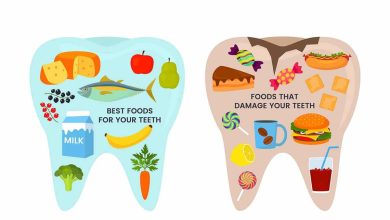Myofunctional Therapy: An Updated Guide To A Holistic Treatment For Oral Health

Introduction
Your oral health is more important than just a bright smile and fresh breath. It’s a gateway to your overall health and wellbeing. However, many people underestimate the impact of oral health on their overall health.
For instance, did you know that poor oral health can cause diabetes, heart disease, and stroke? The mouth is also a powerful indicator of your breathing and sleep patterns. If you have oral problems such as snoring, sleep apnea, or speech difficulties, it’s possible that you have underlying myofunctional disorders.
Myofunctional therapy is an emerging field of healthcare that aims to treat oral health problems holistically. It’s a non-invasive, drug-free, and painless approach that targets the underlying causes of oral health issues. In this article, we’ll explore the concept of myofunctional therapy, its benefits, techniques, and the science behind it.
What Is Myofunctional Therapy?
Myofunctional therapy is a type of physical therapy that focuses on the muscles, functions, and movements of the face and mouth. It’s an integrative approach that combines dental, speech, and physical therapies to treat a wide range of oral health problems.
Myofunctional therapy aims to correct the improper functioning of the orofacial muscles, which can lead to various health issues.Myofunctional therapy was first developed in the 1950s by Dr. Alfred Rogers, a dentist, and orthodontist.
Dr. Rogers found that many of his patients had oral health issues that were caused by improper tongue and mouth postures. He developed exercises and techniques to help his patients improve their oral posture and function, which led to better oral health outcomes.
Today, myofunctional therapy is used to treat a variety of oral health problems, including:
- Sleep apnea
- Snoring
- TMJ disorder
- Speech difficulties
- Swallowing problems
- Orthodontic relapse
- Mouth breathing
- Bruxism (teeth grinding)
Benefits Of Myofunctional Therapy
Myofunctional therapy is a holistic approach to treating oral health problems. Unlike conventional treatments that focus on symptoms, myofunctional therapy targets the underlying causes of the issues.
Here are some of the benefits of myofunctional therapy:
- Non-invasive: Myofunctional therapy is a non-invasive treatment that doesn’t require surgery or medication.
- Drug-free: Myofunctional therapy doesn’t involve any drugs, which means it’s a safe and natural approach.
- Pain-free: Myofunctional therapy is painless and comfortable. Patients usually find the exercises and techniques enjoyable.
- Improved breathing: Myofunctional therapy can improve your breathing and help you overcome issues such as sleep apnea, snoring, and mouth breathing.
- Better sleep: Myofunctional therapy can help you achieve better quality sleep by improving your breathing and reducing sleep apnea and snoring.
- Improved speech: Myofunctional therapy can help you overcome speech difficulties by correcting the improper functioning of the orofacial muscles.
- Better oral health: Myofunctional therapy can help you achieve better oral health outcomes by correcting the tongue and mouth postures that can cause dental problems.
Who Can Benefit From Myofunctional Therapy?
Myofunctional therapy can benefit people of all ages, including children and adults. It is especially beneficial for those who suffer from improper oral function, such as mouth breathing and tongue thrusting. Myofunctional therapy can also benefit those who suffer from sleep apnea and snoring.
The Latest Research On Myofunctional Therapy
In recent years, there has been a growing body of research on myofunctional therapy and its potential benefits for people with oral function disorders. Here are some of the key findings:
Myofunctional therapy can improve sleep istanbul escort apnea Research has shown that myofunctional therapy can be an effective treatment for obstructive sleep apnea.
In one study, patients who received myofunctional therapy experienced significant improvements in their sleep apnea symptoms, including fewer episodes of apnea and improved oxygen saturation levels.
Myofunctional Therapy Can Improve Swallowing Function
- A study of patients with dysphagia (swallowing disorders) found that myofunctional therapy was effective in improving swallowing function. Patients who received myofunctional therapy had significant improvements in their ability to swallow solid foods and liquids.
Myofunctional Therapy Can Improve Speech
2. Research has shown that myofunctional therapy can be an effective treatment for speech disorders, such as lisping and stuttering. In one study, children who received myofunctional therapy had significant improvements in their speech articulation.
Myofunctional Therapy Can Improve Facial Aesthetics
3. Myofunctional therapy can also improve the appearance of the face by correcting the muscles that control facial expressions. In one study, patients who received myofunctional therapy had significant improvements in their facial aesthetics, including a reduction in facial wrinkles.
Techniques Used In Myofunctional Therapy
There are several different techniques used in Myofunctional Therapy. Some of the most common techniques include:
- Tongue exercises: These exercises focus on strengthening the tongue muscles and improving its placement and function.
- Lip exercises: These exercises focus on strengthening the lips and improving their function, such as closing the mouth properly.
- Cheek exercises: These exercises focus on strengthening the cheeks and improving their function, such as proper chewing and swallowing.
- Breathing exercises: These exercises focus on improving nasal breathing and decreasing mouth breathing.
- Swallowing exercises: These exercises focus on retraining the swallowing muscles and improving the swallowing function.
Training Process Involved In Myofunctional Therapy
The training process involved in Myofunctional Therapy can vary depending on the patient’s needs and the severity of the OMD.
However, the general process typically involves the following steps:
- Evaluation: The therapist will conduct an evaluation to assess the patient’s muscle functions, swallowing function, breathing patterns, and speech.
- Customized treatment plan: Based on the evaluation, the therapist will create a customized treatment plan that includes specific exercises tailored to the patient’s needs.
- Training sessions: The patient will attend regular training sessions with the therapist to learn and practice the exercises.
- At-home exercises: The patient will be given exercises to practice at home between training sessions.
- Progress monitoring: The therapist will monitor the patient’s progress and make adjustments to the treatment plan as needed.
Effectiveness Of Myofunctional Therapy
Recent research has shown that Myofunctional Therapy can be an effective treatment option for OMDs. Some studies have reported significant improvements in speech, breathing, and swallowing functions after completing Myofunctional Therapy.
One study published in the International Journal of Pediatric Otorhinolaryngology found that Myofunctional Therapy was effective in improving swallowing function in children with cerebral palsy.
Conclusion
Myofunctional therapy is a holistic approach to oral health that aims to promote proper oral function and overall facial health. The therapy involves exercises and training that target specific muscles in the mouth, face, and neck.
Myofunctional therapy offers several benefits, including correcting improper oral function, improving speech, preventing dental problems, enhancing facial aesthetics, and improving sleep quality.
It is a safe and effective therapy that can benefit people of all ages. If you suffer from improper oral function or sleep apnea, myofunctional therapy may be an option for you. Speak to your dentist to learn more about myofunctional therapy and how it can benefit you.





